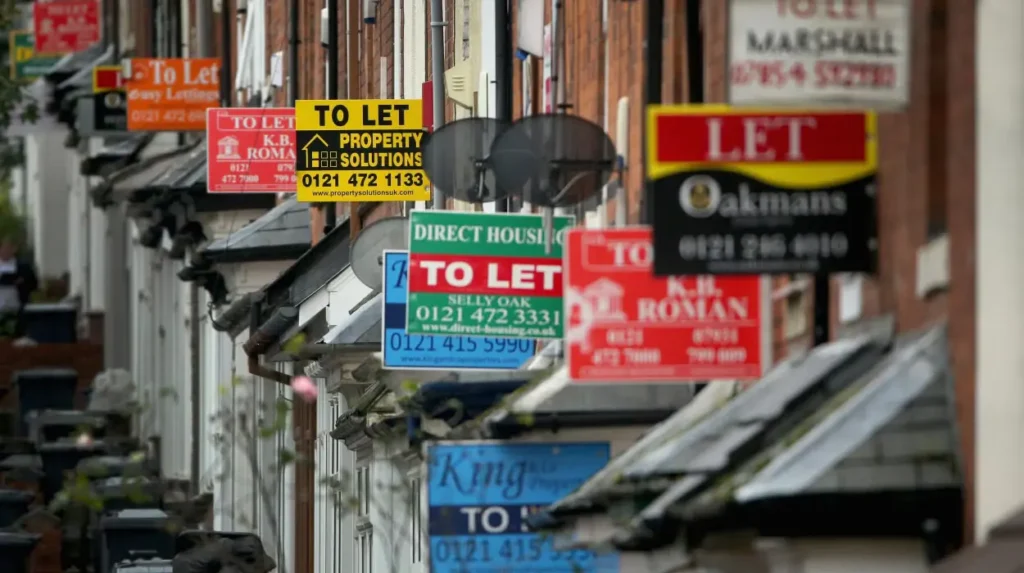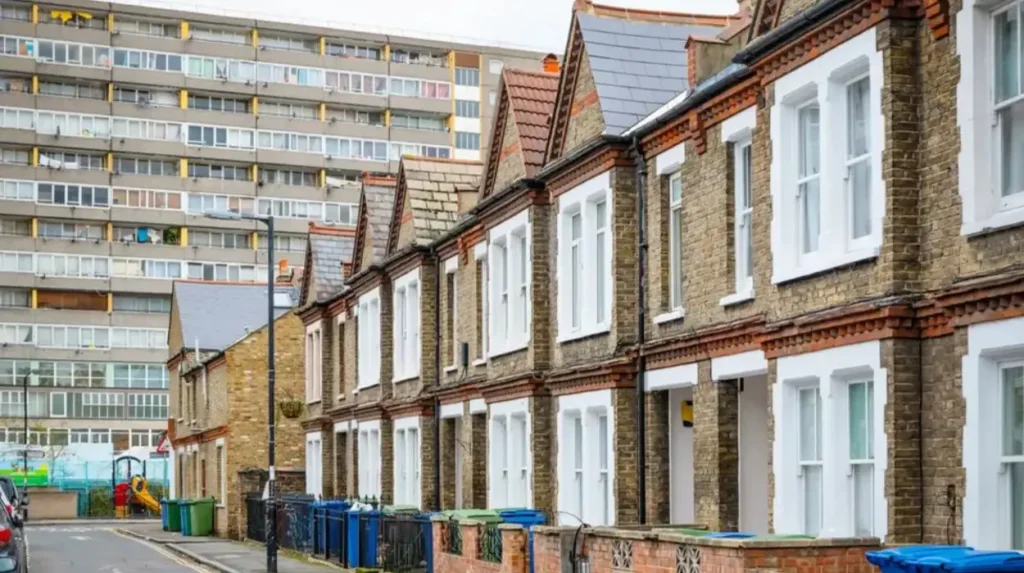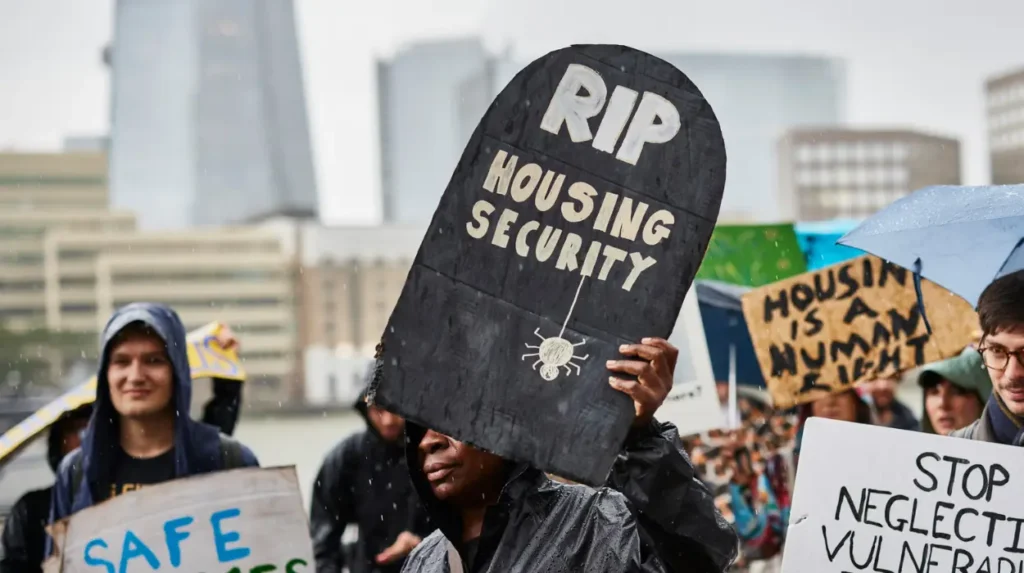The housing crisis in the United Kingdom has become one of the foremost challenges in society today. High and unaffordable property prices are driving millions of people into poverty, and rents that have become unmanageable, combined with a severe lack of affordable housing and availability of adequate sites, are reducing housing provision to levels reminiscent of a post-WWII era. It is important to understand the crisis properly and some of the causes and effects before we can begin any proper attempts to alleviate and address it.
Causes of the UK Housing Crisis
Six main causes of the UK Housing Crises are:
1. Housing Supply
One of the primary causes of the housing crisis has been a chronic lack of homes. For decades, the supply of homes in the UK has not kept pace with growth in the population. Government targets for house building have failed year on year, and the volumes that are now being constructed show no sign of closing the gap between supply and demand.
2. Population Growth and Changing Households
Whenever you drive population growth naturally or through immigration, greater pressure will be placed on housing demand. Additionally, the increased number of single-person households coupled with changing family structures means even without a significant increase in population, more homes are required.
3. Construction Costs
The costs of delivering new homes are now extremely high due to the high cost of building materials, lack of skilled trades and labour, and the costs of, and value placed on, safety and environmental regulation. This means that developers will focus on high-value, high-profit projects rather than affordable housing projects.
4. Erosion of Social Housing
The Right to Buy policy has reduced the number of council houses and has done little to replace council or social housing in sufficient numbers, meaning low-income families are reliant on the private rental market, often for unaffordable properties.
5. Rise in Buy-to-Let Own and Investment Property
A rise in buy-to-let landlords or overseas investors has taken a lot of homes off the first-time buyers market. Some properties are even bought simply as an investment but are left vacant, which further reduces availability.
6. Planning Schemes/Delays
Tough planning laws and local pushback to new homes often create delays or block new housing projects. These planning laws work to protect local communities and green spaces, while also inhibiting the delivery of much needed housing.

Challenges Created by the Housing Crisis:
The housing crisis has created multiple challenges:
- Unaffordable Home Ownership: For many, obtaining a home is unrealistic. Properties have risen in price much faster than wages, limiting people’s ability, especially many in younger generations to save for a deposit and get a mortgage.
- Increasing Rent Prices: The limited amount of affordable homes has increased demand for rentals, leading to an increase in rent prices. Many renters are spending a large portion of their income on rent, leaving little to no money left for savings or other necessities.
- Homelessness and Housing Insecurity: The lack of affordable housing leads directly to increased homelessness. Many are housed temporarily or are constantly housing insecure or facing eviction because of increased rental prices.
- Regional Disparities: The housing crisis is not uniform. High demand has created extreme affordability challenges in London and the South-East of the country, while rural areas and northern localities have limited supply and few developments.
- Pressure on Public Services: When housing is too high in certain areas it makes it extremely difficult for necessary workers like teachers, nurses, and emergency workers to live near work, increasing pressure on public services.

Possible Solutions to the Housing Crisis
Here are six main steps to understand solutions to the housing crisis:
1. Development of the Housing Supply
One of the most appropriate alternatives to address the housing crisis is to increase the supply of affordable homes. Giving housing delivery in accordance with targets will become increasingly critical to address this crisis, with enforced legislation to ensure a significant (% percentage of any new development must be at lower than average earnings.
Collaboration between public and private sectors can facilitate delivery, while developer incentives can incentivize the construction of affordable housing. But without increased supply, these other measures can only assist with the problem.
2. Reform the Planning System
The issue with planning in the UK is that the process is slow, which inevitably delays the delivery of housing. If planning reform is to occur, we think that reducing unnecessary levels of bureaucracy and introducing digital application processes with shorter decision timeframes could be effective.
Local authorities could have flexibility to approve developments while complying with environmental protections if the development met an urgent housing need. The sooner a project can be approved, the sooner homes can be constructed and people can move in.
3. Social Housing Revival
Social housing has considerable importance as it offers valuable rental stability for renters while providing low-cost housing in many cases. Increased investment in council housing projects, in conjunction with a long-term alert of funding to local authorities, would help replace lost or derelict stock over the years.
New social housing could be energy efficient and community-led, making sure to improve the standard of living for tenants. With a flourishing social sector, the dependence on private rentals could reduce, as their costs are often higher.

4. Regulating Rental Property
Regulation can offer affordability and stability to renters. Elemental regulatory measures could include rental caps, longer agreements, and ensuring landlords uphold high maintenance standards for rental properties. This gives tenants a level of security while providing landlords a fair return. A well-managed rental market reduces exploitation and housing insecurity.
5. Promote Modern Building Techniques
Modern building methods, including modular housing, prefabrication, and the use of sustainable materials, can save costs and time on builds. These options allow developers to build quality housing faster to meet demand.
With government support for developers to use innovative construction methods to solve affordable housing issues, accepting the use of technological and sustainable advances may also encourage environmentally friendly building processes. The quicker and cheaper the housing builds, the more housing available for people in need.
6. Restrict Speculative Property Ownership
Restricting property purchases specifically for investment can release houses for people that intend to live there. For example, higher taxes on vacant properties and higher taxes on second properties. Promoting owner-occupancy helps ensure that housing delivers on its principle function of providing shelter rather than simply as an asset. This also reduces speculation, as ownership of housing will have a direct relationship to supply and demand and help balance the housing market and increase affordability.


